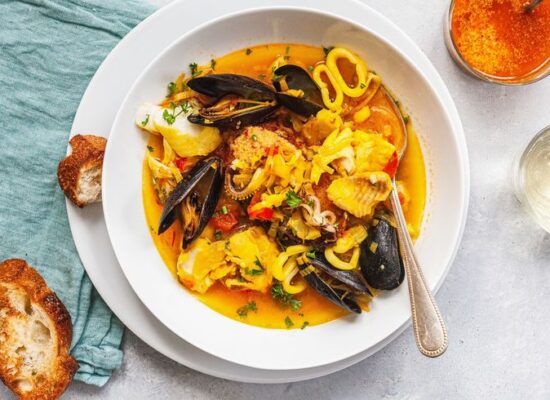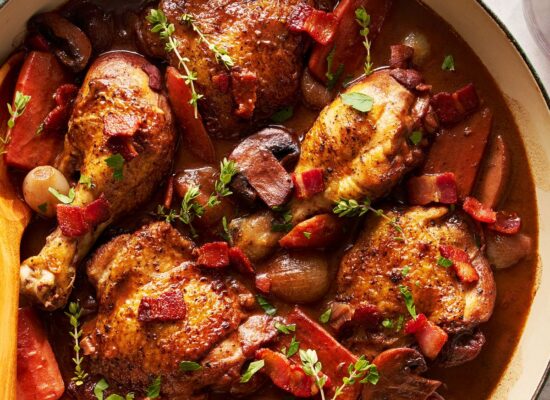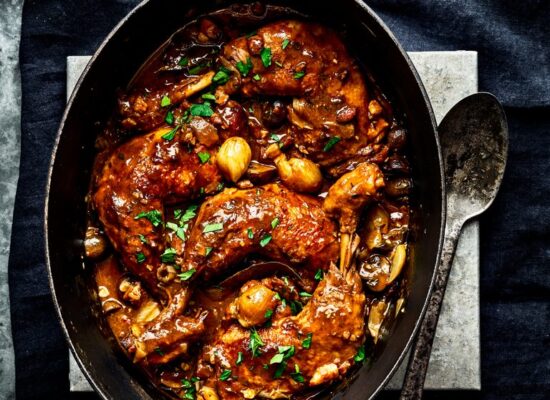Making paella at home can be a delightful and rewarding experience. Here’s a detailed recipe for a traditional Spanish seafood paella, but feel free to customize it with your favorite ingredients.
Ingredients
For the Paella:
- 2 tablespoons olive oil
- 1 onion, finely chopped
- 1 red bell pepper, chopped
- 4 cloves garlic, minced
- 2 cups short-grain rice (such as Bomba or Arborio)
- 1 teaspoon smoked paprika
- 1/2 teaspoon saffron threads, soaked in 2 tablespoons warm water
- 4 cups chicken or seafood stock, warmed
- 1 cup white wine
- 1 can (14.5 oz) diced tomatoes, drained
- 1/2 cup frozen peas
- 1 pound large shrimp, peeled and deveined
- 1 pound mussels, cleaned and debearded
- 1 pound clams, cleaned
- 1/2 pound squid, cleaned and cut into rings
- 1/2 pound firm white fish (such as cod or haddock), cut into chunks
- Lemon wedges, for garnish
- Fresh parsley, chopped, for garnish
Instructions
1. Prepare Ingredients:
- Soak Saffron: Soak the saffron threads in warm water.
- Warm Stock: Warm the chicken or seafood stock in a saucepan.
2. Cook the Base:
- Heat Oil: Heat olive oil in a large paella pan or wide, deep skillet over medium heat.
- Sauté Vegetables: Add the chopped onion and red bell pepper. Cook until softened, about 5 minutes.
- Add Garlic: Stir in the minced garlic and cook for another minute.
3. Add Rice and Spices:
- Add Rice: Add the rice to the pan and stir to coat the grains with the oil and vegetables.
- Spices: Stir in the smoked paprika and the saffron with its soaking water.
4. Add Liquids:
- Wine: Pour in the white wine and cook, stirring occasionally, until the wine is mostly absorbed.
- Stock and Tomatoes: Add the warm stock and diced tomatoes. Stir to combine.
5. Cook the Rice:
- Simmer: Bring the mixture to a boil, then reduce the heat to low. Let it simmer without stirring for about 15-20 minutes, until the rice is nearly tender and most of the liquid is absorbed.
- Peas: Sprinkle the frozen peas over the top during the last 5 minutes of cooking.
6. Add Seafood:
- Add Seafood: Arrange the shrimp, mussels, clams, squid, and fish on top of the rice. Cover the pan with a lid or aluminum foil and cook for another 10-15 minutes, until the seafood is cooked through and the mussels and clams have opened. Discard any mussels or clams that do not open.
7. Finish and Serve:
- Rest: Remove the pan from the heat and let it rest, covered, for about 5 minutes.
- Garnish: Garnish with lemon wedges and chopped fresh parsley.
- Serve: Serve the paella directly from the pan, ensuring each serving includes a mix of rice and seafood.
Tips:
- Paella Pan: If you don’t have a paella pan, use the widest, shallowest pan you have.
- Socarrat: The crispy layer of rice at the bottom of the pan, known as socarrat, is a prized feature of good paella. To achieve this, increase the heat to medium-high during the last few minutes of cooking, but watch closely to avoid burning.
- Variations: Feel free to customize your paella with other proteins such as chicken, chorizo, or a variety of vegetables.
Enjoy your homemade paella!


















































